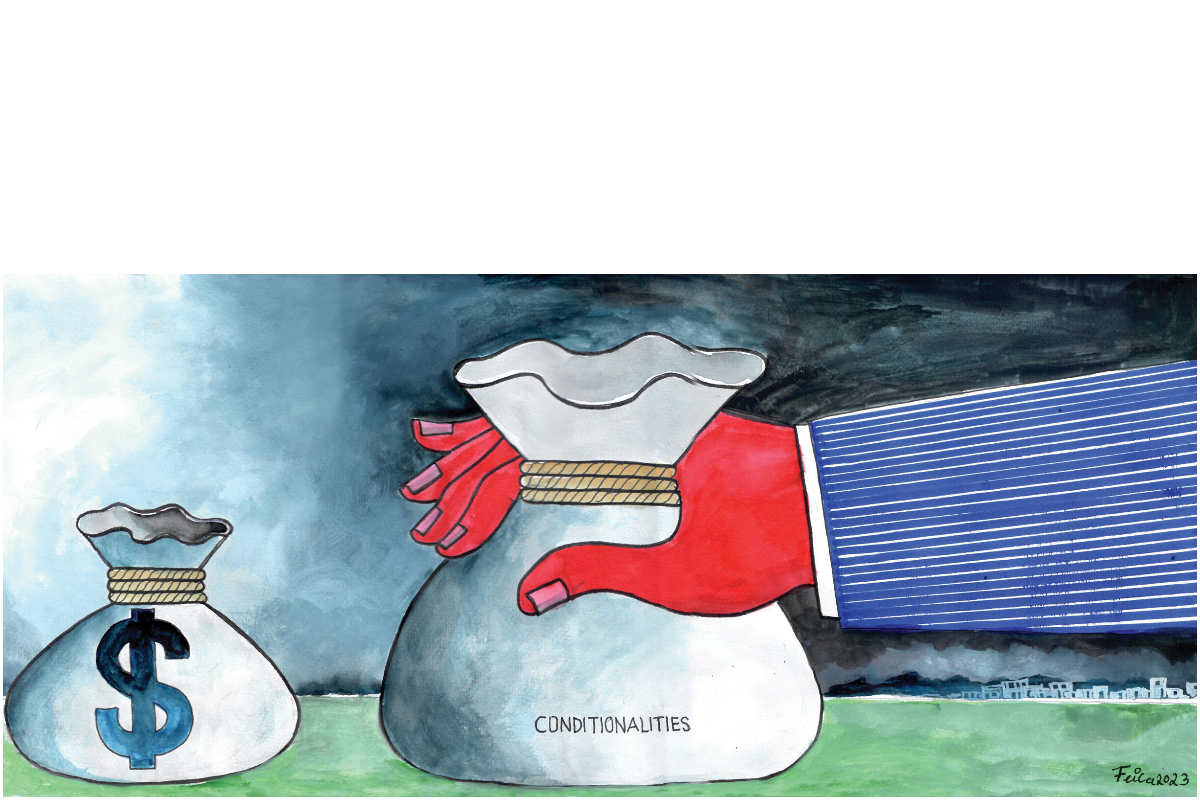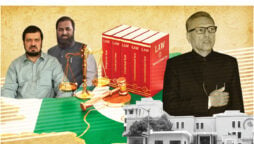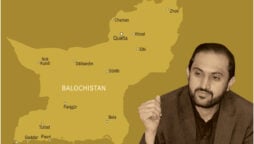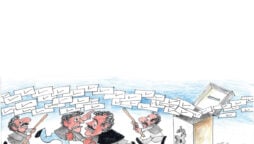
Burdening the Masses
The second finance bill in a year has cast the dye for a disaster
KARACHI: An audacious mini-budget with Rs170 billion additional taxes was the reply from a non-performing finance minister in a desperate attempt to cobble a deal with the International Monetary Fund (IMF). This is not only illogical but also imprudent of the government to burden the masses for no fault of their own.
The anticipated IMF deal will get a Pakistan new tranche of $1.2 billion at the altar of the economic vibrancy.
After hectic deliberations with the IMF team on the ninth review, it was announced to increase the general sales tax (GST) on luxury items from 17 per cent to 25 per cent. It also raised the standard rate of GST from 17 per cent to 18 per cent; a 20 per cent federal excise duty (FED) on the air travel fare, or Rs50,000, whichever is higher; a 10 per cent withholding tax adjustable on wedding events; and per kilogramme FED increase on cement from Rs1.50 to Rs2.
Besides, the government also increased the cigarette rates. As against the existing rate of Rs6,500 per 1,000 cigarettes, the FBR notified the new FED rate at Rs16,500 — an increase of Rs10,000, or 153 per cent. The per cigarette FED rate has been increased from Rs6.5 to Rs16.50 for expensive brands. The minimum price cap for the expensive brand has also been increased from Rs6,600 to over Rs9,000.
Similarly, for the less expensive brands of below Rs9,000 per 1,000 cigarettes, the per 1,000 cigarette tax has been notified at Rs5,050 — up from Rs2,550. There is an increase of 98 per cent in the tax for this category. The per cigarette tax has been increased from Rs2.55 to Rs5.05.
Similarly, the government increased the FED rate on fizzy drinks and beverages to 20 per cent — up from 13 per cent. It has been proposed that the FED on juices would be set at 10 per cent in the first phase.
The point is that the government did not tax the income of the traders — a sector that remains highly under-taxed due to its proximity to the ruling Pakistan Muslim League-Nawaz (PML-N). Instead, the government has piled up the burden on the already heavily taxed sectors.
This indicates political engineering of the beleaguered dispensation of power, which is shrewd enough to take a call on the voters for fund sake and not the commoners.
The representatives of businesses, which were already taxed, expressed the collective anxieties and concerns of the community. The increase in the electricity and gas tariffs, rising fuel prices and the planned withdrawal of the incentives for the export-oriented industries coupled with recessionary measures are expected to further slow down the economy.
If the exports continue to suffer, then there will be no balance of payments; the current account will deteriorate waywardly; reserves buildup will remain elusive; the revenue targets will be missed and employment generation will remain at the lowest level.
The additional tax measures along with the upsurges in the petroleum and gas prices would further worsen the inflation and the economy, besides exerting unbearable pressure on the common man and the businesses.
For decades, experts, economists and multilateral donors have pointed out the need for Pakistan to broaden its tax base. This broadening is seen as a necessary precondition for stabilising the country’s chronic fiscal deficit challenges.
Additionally, a broader tax base would lead to the increased fiscal capacity for spending on human development needs. However, the incumbent coalition government led by the PML-N seems incompetent to comprehend the country’s real problems, or they are just unwilling to hurt their political supporters by including them in the tax net.
Pakistan cannot economically move forward without an autocratic tax regime. Unless the government brings all the people to tax on incomes this state cannot survive. But the incompetence and illegitimacy of the government have made it incapable to take any decisive and corrective measures to reform the economic foundation of the country.
A wide range of traders, professionals and landlords would have been paying huge income taxes, considering their lifestyles, ironically that is not the fact.
The agriculture sector contributed Rs11.5 trillion to the national GDP, yet the total agricultural income tax collection across the country was less than Rs3 billion, or 0.02 per cent, of the agriculture GDP in 2020.
From the rest of the GDP, the Federal Board of Revenue (FBR) collected income tax of over Rs1.7 trillion, which roughly amounted to 5 per cent of the manufacturing and services sector GDP. However, Section 41 of the Income Tax Ordinance 2001 exempts agricultural income from the federal income tax, leaving this space for the provinces to tax. All the provinces; therefore, have their respective laws to tax agricultural income.
In 2019/20, the total provincial agricultural income tax collection turned out to be Rs2.75 billion, of which around 74 per cent came from Punjab, 22 per cent from Sindh and merely 3 per cent from Khyber-Pakhtunkhwa and Balochistan together.
According to a World Bank report, the current tax system for agriculture has two key flaws: the revenue raised from the taxes is minuscule, while the income from agriculture is treated differently from other sources of income. The latter results in widespread tax evasion, with non-agricultural income being declared as agricultural income.
A look at the long-term trends reveals that the country has largely failed to broaden its tax base. In fact, the long-term data from the FBR suggests that Pakistan has failed to achieve a double-digit tax-to-GDP ratio during the past 22 years, despite phenomenal growth in the revenue collection over the years.
In comparison, the tax-to-GDP ratio is 19 per cent in India, 17 per cent in Sri Lanka, 19 per cent in Thailand, 15 per cent in the Philippines, 32.5 per cent in Turkiye and 26.8 per cent in South Korea. In the OECD countries the average tax-to-GDP ratio is 35 per cent.
The official statistics released by the FBR, which has the mandate to collect federal taxes, revealed that the tax-to-GDP ratio was recorded at 9.3 per cent in the fiscal year 2000/01, which remained stagnant at 9.2 per cent for the year ended 2021/22.
The total GDP size has recorded a robust growth to Rs66.95 trillion for the fiscal year 2021/22, compared with 4.21 trillion in the fiscal year 2000/01.
Similarly, the FBR’s revenue collection recorded a massive growth of Rs6.15 trillion for the fiscal year 2021/22, compared with Rs392.28 billion in the fiscal year 2000/01.
Why after the huge increase in the size of the total GDP, the tax-to-GDP ratio remained in the single digit? Only because the successive governments failed to reform the system and broaden its tax base. Even in the previous government of Pakistan Tehreek-e-Insaf (PTI), when it tried to start documentation of the economy, the opposition political parties led by the PML-N created hurdles, ultimately becoming successful in putting it on a cold storage.
Until and unless, the country goes to the polls and a government of legitimate stability is ushered in, the crisis will go on unabated. The rest is secondary, such as documentation of the economy, broadening the tax base by including landlords, professionals and traders in the tax net, raising the tax-to-GDP ratio, and above all, eliminating the corruption in the revenue collection departments of the government.
The recent mini-budget is not more than a number juggling to get the IMF job done for the government, completely indifferent from the excruciating pain of the masses, which they brought through their additional taxes. The second finance bill in a year has cast the dye for a disaster.
Catch all the National Nerve News, Breaking News Event and Latest News Updates on The BOL News
Download The BOL News App to get the Daily News Update & Live News.












 Read the complete story text.
Read the complete story text. Listen to audio of the story.
Listen to audio of the story.